The Central do Brasil is marked for it’s transitional moments on brazilian political history, from the Republic proclamation in 1889 to the João Goulart rally on the eve of the 1964 coup d’état. Geographically, it’s surroundings has grown and modified in accordance with Rio de Janeiro’s expansion demands. Still on the 19th century the city’s first full scale road, iniatially named Rua Larga (Large Street) in 1763, was opened. Intending to free the business with the port from difficulties, this road connected the Valongo Dock to the Santana Field. And then a new path between swamps stablished the Cidade Novaand a connexion from Downtown to São Cristóvão, fundamental for the arrival of the royal family in 1808.
On the 19th century, the region is valued with the construction of big mansions. In one corner, where now the Duke of Caxias palace is located, the imperial troops were settled. On the other, the Saint Joaqui orphans seminary, later turned into Colégio Pedro II. Along with the city’s modernizaion, the Church Of Santana is demolished in order to constructo a railroad and, in 1858, the inauguration of the Dom Pedro I station, as known as Central do Brasil nowadays. There’s a complete alteration of of the area that comes with the opening of Presidente Vargas, in 1944, and the construction of many rolling tracks to interconnect the city on the summit of the automobile expansion. But, because of it’s surroundings got to be forgotten, it pass through a degeneration, and fear and disregard take over the place. This #RoleCarioca prposes the recapturing of a place hidden on plain sight.
Image: Holland, S.H./1930/BNDigital


The original bulding, inaugurated close to Dom Pedro II railroad foundation (in the middle of 19th century), wnet down in 1930 for the expansion of the train system. It was substituted by the enormous, art decó styled, typical brazilian industrialized building made of reinforced concrete, following a Strong charateristic of the nationalist New State of Getúlio Vargas. It gained international recognition by appearing on the film “Central do Brasil” – and because of it’s infamy also.
Imagem: Halley Pacheco de Oliveira/WikiCommons

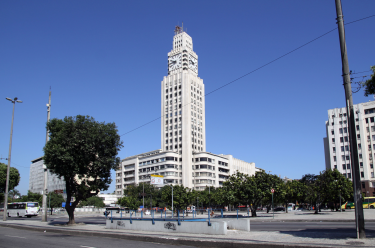
Inaugurated in 1941 as the Ministry of War and Army, the grandiloquent 23 floors structure was parto f Varga’s plano f the Republic’s image invigoration and na army that represented the brazilian vanguarda. The remains of the brazilian army patron, Duke of Caxias, are placed before the palace.
Image: Alexandre Macieira/Riotur


Headquartes of Ministry if Foreing Affairs between 1899 and 1960, the emblematic pink mansion belonged to the Viscount of Itamaraty, who only used it as a ballroom – this being the reason whi there was no rooms but saloons. It was acquired by the Republican Gorvernment for the purpose of being the official resedency and seat of the First Republic presidents, until it’s moving to Catete.
Image: Blog Torre e Arquitetura


Characteristical of the first decades of 19th century, the palace, constructed in na american renaissancist style, it belongs to a moment when electric power started to taake the streets. When french company Light delicered it’s new streetcar electrical models, a parto f the population got scared of the new technological invention, till it became the most common wau of transportation in Rio de Janeiro, harmonizing with the city’s spirit.
Image: Revista Conexão Light/Divulgação


It have been told that, in his touth, Dom Pedro II asked that the Money invested on the construction of a statue in his honor was used to build a school instead: and just like this the former São Joaquim school came to lige on the historical buildin ar Camerino street. Later the place would receive the monarch’s name – the homage was almost removed during the Republic but a group of famous former stundents interceeded for it’s maintanance. The institution is recognized as an icon in high quality public education yet.
Image: Site CP2Centro.net
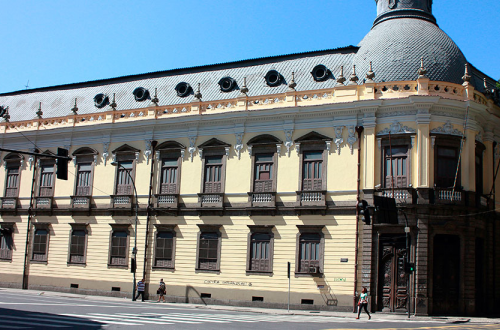

Close by the Sardine Alley, at the bottom of Conceição Hill, one of the few raminders of the barroque rococó style from the 17th century, it watched the city’s changes around, keeping it’s unpretendingly façade. Into the church are preserved antiques of Saint Rita de Cássia and Saint Lenho, been promoted to Matrix Church in January 30th, 1751.
Image: Monica Araújo

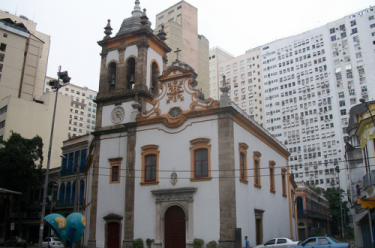
The building of number 30 at Rio Branco avenue is one the reminders of the opening of Central Avenue time, composed in the same period of the avenue ans stablished in 1906. The inside has a rotunda ornamented with Golden mosaic panels. On the front neoclassical columns in Carrara marble and windowns decorated with garlands. It was the old Caixa de Amortização headquarters until the decree of extinction in 1967 when it was the space with already functioning Central Bank.
Image: Site BCB


Maybe the most majestic and pompous church in Rio, not only proportionaly, but it’s finishing and sublime dome. It’s construction, facing the port, was initiated in 1775 as payment of a promess made by sailors who survived a shipwreck. The construction was only concluded in the end of 19th century after countless reformations and reconstructions, it mixes neoclassic, pombaline and barroque styles. In there took place the mass for Edson Luis, a student killed during the military dictatorship in a confrontation that didn’t become a bigger tragedy thanks to the priests intervention.
Image: Tânia Rego/Agência Brasil
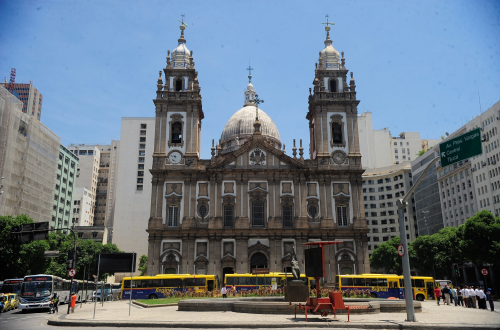

The gorgeous structure in neoclassical style became iconic to the national financial world while being the headquarters for Banco do Brasil until 1960. Inaugurated in 1906 as the seat for Rio de Janeiro’s Trading Association, it became Banco do Brasil property in the 20’s. It’s rotunda have sheltered the exchange hall of the Public Finance Stock. Nowadays it is the home o fone of the most importante numismatic collections of brazilian history and counts with na extensive and varied programmation in it’s cinemas, galleries and theatres.
Image: Site do CCBB

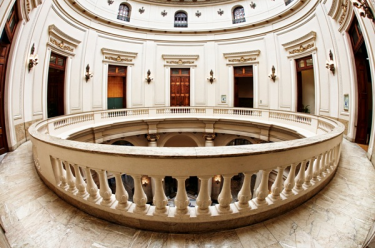
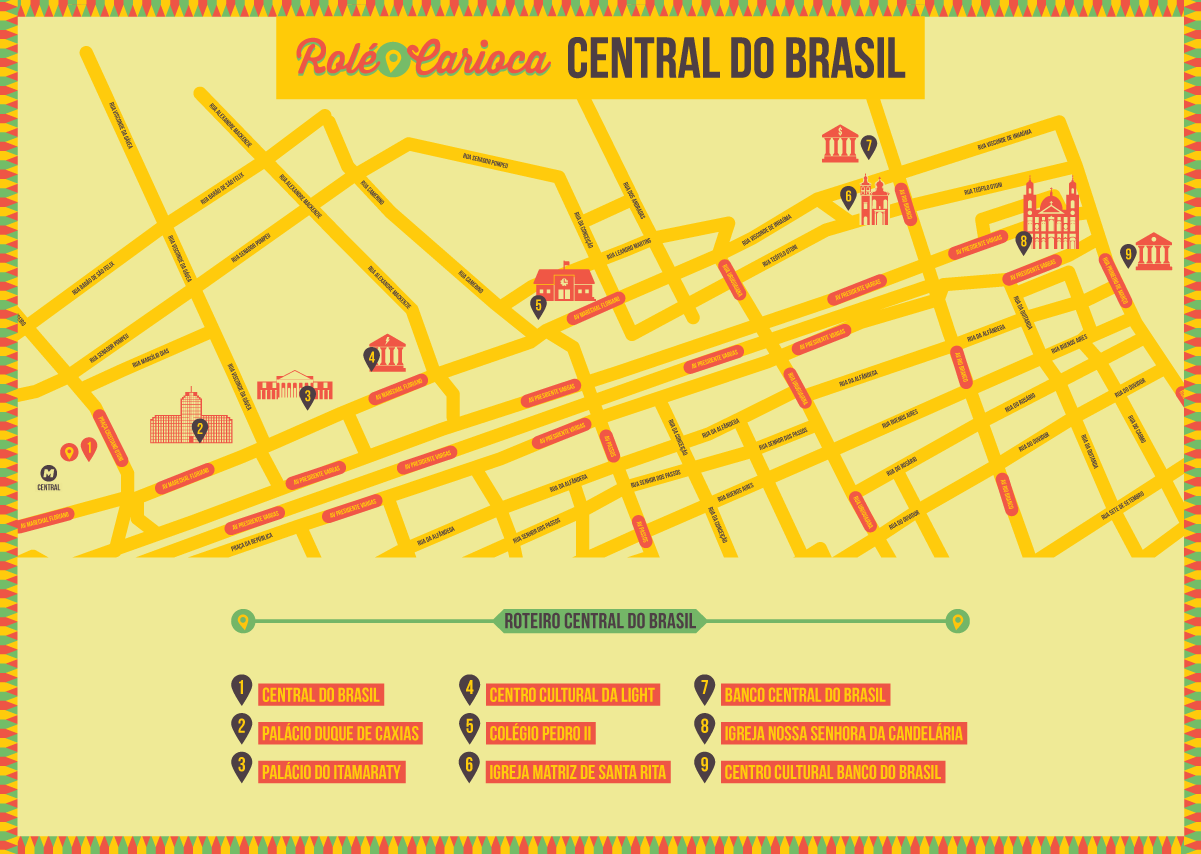
There’s a lot of stories involving the origins of the stone-pit behind the Central. Some say that “providence” was asked by the former combatants from the Canudos camp. Facing the promessa of na enrolment given by the government in case of victory, hordes manifested along the width of the presente Duke Of Caxias palace demanding everything that have been pledged to them. Impatient, they decided to take the Providence, occupying the hill behind the palace.


Carioca’s love to give nicknames to the streets, poinbts and monuments independently of the official nomenclature. And that’s not recent. When they connected the Santana Field and the Valongo Dock, it was a road so large that could easily distinguish from the alleys and lanes of the Colonial Rio, so soon enough it was named Rua Larga (Large Street). What only a few know though, is that the continuity of Camerino street was little narrow street with less then 5 meters (196 inches) wide, making it’s way till Alijube jail (at Acre street), being nicknamed Narrow Street.


The four fronts watch of Central do Brasil was built to be a reinforced concrete monumento on the biggest avenue in Brazil until that moment in urban área. Being 135 meters (5314 inches) high, it is bigger than the famous Big Bem, and remains as the main carioca reference, aiming it’s watch-hands during the course through the city.


Royal matrimony was considered State business and not a heart metter. Doom Pedro II and Teresa Cristina’s was consummated by proxy, in Naples, as part of a political arrangement with the King of the Two Sicillys. As reported, the first meeting of the couple lacked in romance. The emperor felt he was tricked by the potrait of Teresa he received before the union: the woman on the painting looked very diferente from the one on board of the frigate that brought her from Europe – short and lacking in aesthetic appeal. It was advised to be patient though, that in time the affection would arise. Besides, the contract was already signed, there was no coming back. However, the love would emerge between the couple and, according to the historians, the union contributed to Din Oedri’s maturing, now “more confident and expansive on both official and social acts”.


At this traditional representative of portuguese cooking, the lobster is the chief dish since it’s inauguration, in 1950. Prepared in many ways, the crustacean can be served grilled with rice and broccoli, boiled potatoes and almonds. On Saturdays there’s a shrimp rotation. For desert they serve classic portuguese sweets as wall as toucinho do céu and Belém pastry.
Barão de São Félix Street, 75
Phone: (21) 2233-8358
Opening hours: from Tuesday to Sunday, 11am to 4 pm
Image: Sentaí website


The library opened on March 29, 2014 to be the head office of the network of Park Libraries implemented by the the Government of Rio de Janeiro, includes Biblioteca Parque de Manguinhos, the Public Library of Niterói and Biblioteca Parque da Rocinha. Its literary collection has over 250,000 items, art books, comics, 20,000 films, a children's library, theater and auditorium. It also promotes activities in order to encourage reading, besides being an informal space for learning.
Adress: 1261, Presidente Vargas Ave.
Phone: (21) 2332-8647/ 2332-7225


At Miguel Couto street, the cars gave plave to the so called “marine chicken” as people would nickname the sardines around there. This story began around the 50’s when two portuguese Brothers opened a restaurant to serve their homeland dishes, the Ocidental Bar, which gained a branch, the “King of Marine Chicken”. Now four restaurants share the alley with their open air tables usually full in the end of the day and during weddings next door in Matrix Saint Rita.
Miguel Couto Street, 139
Opening hours: from Monday to Friday, 11am - 10 pm; saturdays, 9:00 A.M. to 1 P.M.
Image: GoogleMaps

